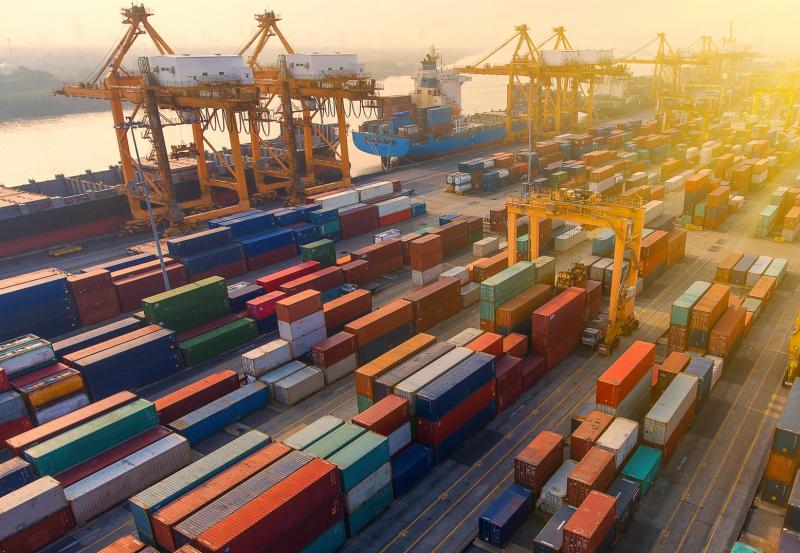
With terrorist attacks in recent years, there has been a movement in the aviation and port industries towards streamlining security processes to achieve a higher sense of vigilance and stronger emergency responses.
Chantal Baril, Vice President of GardaWorld Aviation Services, and Luc Dupont, Vice President of GardaWorld Security Services, Quebec, participated in a joint interview to discuss security in airports and port facilities.
Can you please provide some background about GardaWorld’s pre-board screening services at Canada’s airports as well as port security services?
Chantal Baril: GardaWorld provides pre-board screening services at 28 Canadian airports as part of a contractual agreement with CATSA, the Canadian Air Transport Security Authority. We have been working in close collaboration to ensure passengers’ safety while offering a positive travel experience. We are providing services to some of the largest airports in the country, including Toronto-Pearson. In 2015, 41 million passengers enplaned and deplaned in Toronto and our 1,700 screening officers had to ensure the security of passengers, airlines crew members and airport staff who accessed the restricted areas.
Luc Dupont: We are also providing security services in five of the largest Canadian ports, from access control to mobile patrols. As an example, all passengers embarking aboard cruise ships must go through our pre-board security screening. Transport Canada’s mission is to “propose and enforce laws and regulations to ensure safe, secure, efficient and clean transportation”, thus all our security services in ports and airports comply with the regulations in place.
How has aviation and port security changed in Canada over the last several years, and what do you expect to see change in the future?
CB: CATSA is always looking at new technologies and processes to improve the customer experience while maintaining the highest level of security. There has been tremendous growth in passengers’ volume in Canadian airports since 2003. To put things into perspective, we saw 80 million travelers enplaned and deplaned in 2003 and that number was 130 million last year, which represents a 62% growth. I see now and in the future continuous efforts to ensure that technologies, procedures and training programs enable us to optimize our activities.
LD: Transport Canada now conducts audits to ensure that training course content meet the course requirements of the International Ship and Port Facility Security (ISPS) code. This code, on security arrangements for ships, ports and government agencies, came into force in 2004 and prescribes responsibilities to governments, shipping companies, and port personnel to “detect security threats and take preventative measures against security incidents affecting ships or port facilities used in international trade”.
What are the most important factors you must pay attention to when managing the security and safety of people and assets coming into and out of airports?
CB: We pay a lot of attention to our employees: who we hire and how we train them. First, part of the recruiting process for airport personnel is to complete CATSA’s Airport Security Awareness Training and possess a RAIC, a Restricted Area Identity Card. The processing time to obtain the RAIC is 12 to 16 weeks. Given the sensitive nature of the position, it is essential for Transport Canada to take the necessary time to validate the credentials of the applicants. Thus, attracting and recruiting the right talent is absolutely key. Second, while we use very sophisticated equipment to detect potential threats and non-permitted items, our people must effectively use those tools and follow standard operating procedures to be successful. Therefore the human factor is very important and we have chosen to invest in training programs, refresher trainings, and knowledge checks to enhance their level of confidence when performing their job.
What security solutions help best to address the needs of airports to control entry and departure of people and goods into and out of Canada?
CB: In airports, security solutions are the responsibility of CATSA. The same equipment and processes are in place in all designated Canadian airports, consistently. We are encouraged to leverage best practices so we participate in all types of trials on new security solutions and new procedures, and provide ongoing feedback. Our personnel is continuously trained on the use of the technologies and systems in place, including CATSA’s Boarding Pass Security System (BPSS), x-Rays, Walk-Through Metal Detectors (WTMD), Hand Held Metal Detectors (HMD), Hold Baggage Screening (HBS) systems, the Full Body Scanner (FBS) and Explosive Trace Detection (ETD). The industry has evolved quite a bit with technology and processes, but we are always looking to be more effective and efficient: those two words are really important. What I see in the future is an effort to use technology, procedures and training to optimize the passenger experience, not just the quantitative speed of it, but also the quality of it without ever compromising security.
Learn more about GardaWorld airport and port security services.

